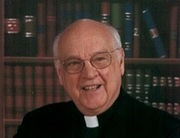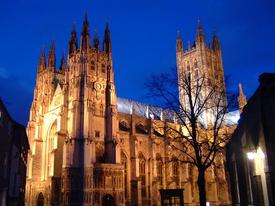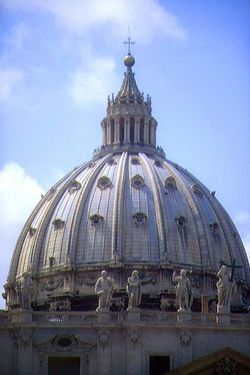Reading my hometown newspaper, The New Haven Register, the editors ran a story about Connecticut’s 15th new Episcopal bishop, the Right Reverend Ian T. Douglas regarding his forthcoming ordination. I am sure for many the presence of Nobel peace laureate Archbishop Desmond Tutu will be a big “plus.” But there are aspects of the new bishop’s opportunistic thinking that raises concerns.
Tag: Anglican Church
Anglicans coming to Rome? Why? … Here’s your answer
If you want to know the reasons why the bishops and vicars of the Traditional Anglican Communion petitioned the Holy Father for full communion –which led to the motu proprio for the Anglicans (given on Nov. 4, 2009), then read their October 2007 letter. The It was recently published by a blogger of Anglo-Catholic sensiblities. Here it is…
Cardinal Walter Kasper speaks on Anglicanorum Coetibus
Edward Pentin of the National Catholic Register penned a piece “Cardinal Kasper on Anglicanorum Coetibus” which dispels much of the misinformation found in both the secular and Catholic media, including certain blogs, about the recent events between Canterbury and Rome. Hopefully, L’Osservatore Romano will provide an English translation of the article they published as a referenced by Mr. Pentin; I am curious to know more. One thing to remember is to interpret these things with charity and understanding. Pray, too, for a profitable meeting between Archbishop Williams and Pope Benedict on Saturday.
Anglicanorum Coetibus: the Apostolic Constitution as a new avenue for Full Communion of the Anglicans with Rome
This morning the Holy See published the Apostolic Constitution Anglicanorum Coetibus which provides a structure for Anglicans coming into full, visible communion with the Bishop of Rome.
Vatican Press Office clarifies some issues on Anglican entrance into full communion
The Pope’s press officer, Jesuit Father Federico
Lombardi, addressed issues regarding the forthcoming Apostolic Constitution on
Personal Ordinariates for the Anglicans entering full communion with the
Catholic Church this today:
supposedly knowledgeable remarks by an Italian correspondent Andrea Tornielli,
that the delay in publication of the Apostolic Constitution regarding Personal
Ordinariates for Anglicans entering into full communion with the Catholic
Church, announced on October 20, 2009, by Cardinal William Levada, Prefect of
the Congregation for the Doctrine of the Faith, is due to more than
“technical” reasons. According to this speculation, there is a
serious substantial issue at the basis of the delay, namely, disagreement about
whether celibacy will be the norm for the future clergy of the Provision.
Levada offered the following comments on this speculation: “Had I been
asked I would happily have clarified any doubt about my remarks at the press
conference. There is no substance to such speculation. No one at the Vatican
has mentioned any such issue to me. The delay is purely technical in the sense
of ensuring consistency in canonical language and references. The translation
issues are secondary; the decision not to delay publication in order to wait
for the ‘official’ Latin text to be published in Acta Apostolicae Sedis was
made some time ago.
study and approval through the usual process followed by the Congregation, have
all included the following statement, currently Article VI of the
Constitution:
and who fulfill the requisites established by canon law and are not impeded by
irregularities or other impediments may be accepted by the Ordinary as
candidates for Holy Orders in the Catholic Church. In the case of married
ministers, the norms established in the Encyclical Letter of Pope Paul VI
Sacerdotalis coelibatus, n. 42 and in the Statement “In June” are to
be observed. Unmarried ministers must submit to the norm of clerical celibacy
of CIC can. 277, §1.
celibate clergy in the Latin Church, as a rule (pro regula) will admit only
celibate men to the order of presbyter. He may also petition the Roman Pontiff,
as a derogation from can. 277, §1, for the admission of married men to the
order of presbyter on a case by case basis, according to objective criteria
approved by the Holy See.
the current practice of the Church, in which married former Anglican ministers
may be admitted to priestly ministry in the Catholic Church on a case by case
basis. With regard to future seminarians, it was considered purely speculative
whether there might be some cases in which a dispensation from the celibacy
rule might be petitioned. For this reason, objective criteria about any such
possibilities (e.g. married seminarians already in preparation) are to be developed
jointly by the Personal Ordinariate and the Episcopal Conference, and submitted
for approval of the Holy See.”
technical work on the Constitution and Norms will be completed by the end of
the first week of November.
Msgr. Stetson speaks about the Personal Ordinariate
Zenit ran an interview the other about the recent
development of possibilities of full communion of the Anglicans with Rome. The
details of how this gesture of the Church has yet to be revealed by the
Magisterium. Here is part of Karna Sawanson’s interview with Monsignor
William Stetson, secretary to the Ecclesiastical Delegate of the Congregation
for the Doctrine of the Faith for the Pastoral Provision for former Episcopal
priests. This part of the interview has to do with “personal ordinariates,” the
ecclesial structure proposed for living in the context of Anglican ways.
ZENIT:
What is the aim of establishing the personal ordinariates? Why was the pastoral
provision not sufficient?
Msgr. Stetson: The pastoral provision is merely an
administrative process for preparing married, former Episcopal priests to be
ordained as Catholic priests at the request of diocesan bishops. The new
ordinariate will provide a canonical structure similar to a diocese for the
pastoral care of lay faithful who convert from the Episcopal church.
ZENIT:
This canonical structure seems to respond directly to a petition made two years
ago by the Traditional Anglican Communion, which has about 400,000 members
worldwide. Do you see many or most of these members entering into communion
with the Catholic Church through the personal ordinariate?
Msgr. Stetson: The
Traditional Anglican Communion is in reality a confederation of so-called
dioceses located in many different countries; it is made up of priests and lay
people and bishops. The Traditional Anglican Communion as such has never been
part of the Anglican Communion under the Archbishop of Canterbury. What will
happen to the dioceses in particular countries will depend on the decisions
reached by the Catholic hierarchy in the respective countries together with the
Congregation for the Doctrine of the Faith. Their numbers are greater in Africa
and Asia.
ZENIT: What will the process look like for Anglicans, especially
priests and bishops, entering the Church through the ordinariate?
Msgr.
Stetson: The Apostolic Constitution allowing for the creation of ordinariates
in each country has not yet been issued. For this reason we do not know the
nature of the process. I would anticipate that it will be similar to that used
for the last 27 years by the Pastoral Provision here in the United States, and
its counterpart in England (that did not, however, provide for parishes and liturgy,
as in the United States.)
ZENIT: The Vatican announcement provided for the
possibility of an Anglican ordinariate having seminarians, who are to be
prepared alongside Catholic seminarians, “though the ordinariate may
establish a house of formation to address the particular needs of formation in
the Anglican patrimony.” Would this include the possibility of marriage
for these Anglican seminarians?
Msgr. Stetson: The specifics have not yet been
made known on this question. At the very least I would assume that the
seminarians would have to be both married and studying in an Anglican seminary
at the time they sought to enter into full communion, and then continue
studying for the priesthood in a Catholic seminary. They would have to be
dispensed from the norm of celibacy on a case-by-case basis by the Holy See.
Future seminarians would have to be celibate.
ZENIT: What other traditions will
the Anglicans retain when they enter the Catholic Church by way of the personal
ordinariate?
Msgr. Stetson: Small parishes that allow for greater cohesion
together. A rich tradition of liturgical expression (language, music,
vestments, space, etc.) in English, dating back to the 16th century. This would
also include a great tradition of the use of sacred Scripture in preaching,
love for the Fathers of the Church and theological expression beyond that of
Roman Catholic scholasticism.
ZENIT: Why is the Vatican able to offer this
concession only to Anglicans, and not Lutherans, Presbyterians, etc., who would
like to enter the Church?
Msgr. Stetson: Anglicans have always enjoyed a
special place in Roman Catholic attitudes toward the rupture of Christian unity
in the West after the 16th century. The Church of England sought to retain many
elements of the Catholic Church while at the same time being Protestant. The
Church of England maintained a greater unity within itself and thus could be
dealt with as a single entity in conversations with Rome.
Anglo-Catholics flooding the Church of Rome?
Some days ago I mentioned here the possibility of a personal prelature for the Traditional Anglican Communion (TAC). I also mentioned that there could be a possibility of a personal prelature for the SSPX crowd and that this might come to pass before the TAC gets their issues worked out. It still may happen but who really knows. Last week an official at the Pontifical Council for Promoting Christian Unity was decrying the idea as one put forth by bloggers and overstepping journalists. Well, this could be the case. But I doubt it. It seems that a higher authority is thinking about a reasonable theological/ecclesiological solution. So, what does one do with the news reported by The Catholic Herald (of Britain) on February 6th stating that the pope himself is the person behind personal prelature notion for the TAC?
It is doubtful that you’ll see scores upon scores upon scores of Anglo-Catholics becoming Roman Catholic through a set up like a prelature devoted to matters Anglican. You’ll see some, but how many? Your guess. Say a prayer to the Virgin of Walsingham and ask for Cardinal Newman’s intercession.
Healing the Reformation’s fault lines: is full communion ahead?
In the days following the Octave of Christian Unity the news-better, rumor- that there is a possible change in relations between Rome and the traditional Anglicans is good news. Yesterday, the Australian online news service, The Record, published the following article on some very key movements in Catholic-Anglican relations; some suggest these movements if realized, could lead to full communion and could be as cataclysmic as King Henry VIII’s break from Rome. Indeed, the Church’s work would be a clear desire to be in full, visible communion with those have at the moment imperfect communion. Ut unum sint, the prayer of our Lord, is realizable I believe if we (a) ask the Holy Spirit for the grace to be unified and (b) if we actually work for it. A problem I see is that our church bodies do a lot of talking but resolve little in reality. All these dialogues, all the money spent, all the time used up seems to be a colossal waste at face value. At least that is the picture on this side of the desk. I am confident that the Pontifical Council for Promoting Christian Unity and Centro Pro Unione (to name two key organizations) are doing lots of great work (my certainty is based on the fact that I know some of the people involved). But one of these days I’d like to see a pay-out on the investment. As does the Church hopes, I, too, would like to see the Holy Spirit bring us together in my lifetime. AND wouldn’t this be a great thing to rejoice in during the Year of Saint Paul????!!!!!
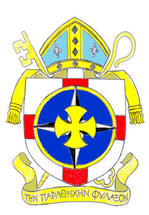 History may be in the making. It appears Rome is on the brink of welcoming close to half a million members of the Traditional Anglican Communion into membership of the Roman Catholic Church, writes Anthony Barich. Such a move would be the most historic development in Anglican-Catholic relations in the last 500 years. But it may also be a prelude to a much greater influx of Anglicans waiting on the sidelines, pushed too far by the controversy surrounding the consecration of practising homosexual bishops, women clergy and a host of other issues.
History may be in the making. It appears Rome is on the brink of welcoming close to half a million members of the Traditional Anglican Communion into membership of the Roman Catholic Church, writes Anthony Barich. Such a move would be the most historic development in Anglican-Catholic relations in the last 500 years. But it may also be a prelude to a much greater influx of Anglicans waiting on the sidelines, pushed too far by the controversy surrounding the consecration of practising homosexual bishops, women clergy and a host of other issues.
The Vatican’s Congregation for the Doctrine of the Faith has decided to recommend the Traditional Anglican Communion be accorded a personal prelature akin to Opus Dei, if talks between the TAC and the Vatican aimed at unity succeed, it is understood.
The TAC is a growing global community of approximately 400,000 members that took the historic step in 2007 of seeking full corporate and sacramental communion with the Catholic Church – a move that, if fulfilled, will be the biggest development in Catholic-Anglican relations since the English Reformation under King Henry VIII.
TAC members split from the Canterbury-based Anglican Communion headed by Archbishop Rowan Williams over issues such as its ordination of women priests and episcopal consecrations of women and practising homosexuals.
The TAC’s case appeared to take a significant step forwards in October 2008 when it is understood that the CDF decided not to recommend the creation of a distinct Anglican rite within the Roman Catholic Church – as is the case with the Eastern Catholic Churches – but a personal prelature, a semi-autonomous group with its own clergy and laity.
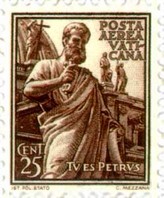 Opus Dei was the first organisation in the Catholic Church to be recognised as a personal prelature, a new juridical form in the life of the Church. A personal prelature is something like a global diocese without boundaries, headed by its own bishop and with its own membership and clergy.
Opus Dei was the first organisation in the Catholic Church to be recognised as a personal prelature, a new juridical form in the life of the Church. A personal prelature is something like a global diocese without boundaries, headed by its own bishop and with its own membership and clergy.
Because no such juridical form of life in the Church had existed before, the development and recognition of a personal prelature took Opus Dei and Church officials decades to achieve.
An announcement could be made soon after Easter this year. It is understood that Pope Benedict XVI, who has taken a personal interest in the matter, has linked the issue to the year of St Paul, the greatest missionary in the history of the Church.
The Basilica of St Paul outside the Walls could feature prominently in such an announcement for its traditional and historical links to Anglicanism. Prior to the English Reformation it was the official Church of the Knights of the Garter.
The TAC’s Primate, Adelaide-based Archbishop John Hepworth, told The Record he has also informed the Holy See he wants to bring all the TAC’s bishops to Rome for the beatification of Cardinal Henry Newman, also an Anglican convert to the Catholic Church, as a celebration of Anglican-Catholic unity.
Although Cardinal Newman’s beatification is considered to be likely by many, the Church has made no announcement that Cardinal Newman will be beatified.
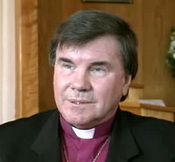 Archbishop Hepworth personally wrote to Pope Benedict in April 2007 indicating that the TAC planned a meeting of its world bishops, where it was anticipated they would unanimously agree to sign the Catechism of the Catholic Church and to seek full union with the Catholic Church.
Archbishop Hepworth personally wrote to Pope Benedict in April 2007 indicating that the TAC planned a meeting of its world bishops, where it was anticipated they would unanimously agree to sign the Catechism of the Catholic Church and to seek full union with the Catholic Church.
This took place at a meeting of the TAC in the United Kingdom. TAC bishops placed the signed Catechism on the altar of the most historical Anglican and Catholic Marian shrine in the UK, the National Shrine of Our Lady of Walsingham in Norfolk, before posting it up in the main street in an effort to gather public support.
Archbishop Hepworth, together with TAC bishops Robert Mercer and Peter Wilkinson, presented the signed items personally to Fr Augustine Di Noia OP, the CDF’s senior ecumenical theologian, on October 11, 2007, in a meeting organised by CDF secretary Archbishop Angelo Amato.
Bishop Mercer, a monk who is now retired and living in England, is the former Anglican Bishop of Matabeleland, Zimbabwe. Bishop Wilkinson is the TAC’s diocesan bishop in Canada.
TACs Canadian Bishop Peter Wilkinson has close ties to the Catholic hierarchy in British Columbia, which has also met the CDF on the issue. He has already briefed Vancouver archdiocesan priests.
One potential problem for the Holy See would be the TAC’s bishops, most of whom are married. Neither the Roman Catholic nor Eastern Catholic churches permit married bishops.
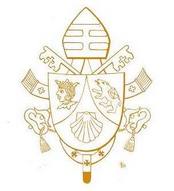 Before he became Pope, Cardinal Joseph Ratzinger discussed the issue of married bishops in the 1990s during meetings of the Anglican Roman Catholic International Commission exploring unity, before the Anglican Church’s ordination of women priests derailed it.
Before he became Pope, Cardinal Joseph Ratzinger discussed the issue of married bishops in the 1990s during meetings of the Anglican Roman Catholic International Commission exploring unity, before the Anglican Church’s ordination of women priests derailed it.
One former Anglican priest who became a Catholic priest told The Record that, along with the Eastern Churches, which have the same sacraments and are recognised by Rome.
The TAC’s request is the closest any section of the Anglican Church has ever come to full communion with Rome because the TAC has set no preconditions. Instead it has explicitly submitted itself entirely to the Holy See’s decisions.
Six days prior to the October 11 meeting between TAC bishops and the Holy See – on October 5 – the TAC’s bishops, vicars-general of dioceses without bishops, and theological advisers who assisted in a plenary meeting signed a declaration of belief in the truth of the whole Catechism of the Catholic Church.
The declaration said, in part: “We accept that the most complete and authentic expression and application of the Catholic faith in this moment of time is found in the Catechism of the Catholic Church and its Compendium, which we have signed, together with this letter as attesting to the faith we aspire to teach and hold.”
Statements about the seriousness of the division between the Anglican Communion and the Catholic Church caused by issues such as the ordination of women priests were emphasised at the wordwide Lambeth Conference held in the UK in 2008.
At the conference, three Catholic cardinals – Walter Kasper, president of the Pontifical Council for Promoting Christian Unity, the Archbishop of Westminster Cormac Murphy-O’Connor and the Prefect for the Vatican’s Congregation for the Evangelisation of Peoples, Ivan Dias, the Pope’s personal envoy, all addressed the issue.
Cardinal Dias, who favours welcoming traditionalist Anglicans into the Catholic Church, bluntly told the Anglican Communion’s 650 bishops that they are heading towards “spiritual Alzheimer’s”and “ecclesial Parkinson’s”.
“By analogy, (Alzheimer’s and Parkinson’s) symptoms can, at times, be found even in our own Christian communities. For example, when we live myopically in the fleeting present, oblivious of our past heritage and apostolic traditions, we could well be suffering from spiritual Alzheime’s. And when we behave in a disorderly manner, going whimsically our own way without any co-ordination with the head or the other members of our community, it could be ecclesial Parkinson.”
Cardinal Kasper warned Anglican bishops that Rome would turn to smaller ecumenical communities if the Anglican Communion at large proved unapproachable ecumenically.
This is bad news for the Anglican Communion, but good news for the TAC.
How old is your Church?
From various sources:
If you are a Lutheran, Martin Luther, an apostate of the Roman Catholic Church, founded your religion in Germany, in the year 1517.
If you are a Mennonite, your church began in Switzerland with Grebel, Mantz, and Blaurock, in the year 1525.
If you belong to the Church of England, also know as Anglican, your religion began with King Henry VIII in 1534, who established his own church because the Pope could not grant him a divorce with the right to remarry.
If you are a Presbyterian, your religion was founded by John Knox, in Scotland, in the year 1560.
